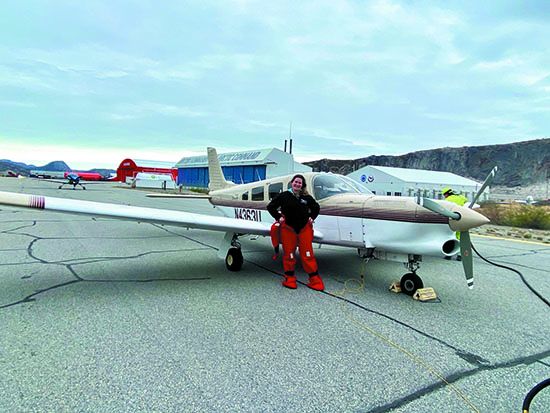It happens—you need to have your airplane moved from one airport to another, but you simply can’t do it when the need arises. The good news is that there are lots of options available to you. Depending on the specific needs of the move involved, those options can range from surprisingly reasonable to breathtakingly expensive. As we researched professional aircraft ferry services, we were impressed at the number of operators offering such services as we’ll as the extent to which some operators were willing to customize their service to meet the needs of a customer.
UNREGULATED
Before we go further, it’s important to understand that aircraft ferry services are not regulated by the FAA beyond the basic requirements that the pilot be appropriately rated for the aircraft. FAR Part 119.1(e) excludes ferry flights from the requirement that a for-hire commercial operator hold a commercial operating certificate and be regulated as an air carrier—so ferry flights of most general aviation airplanes are operated under Part 91 of the regs.
That also means that it’s caveat emptor for the aircraft owner who is hiring a ferry operation. Accordingly, you need to do your homework regarding the ratings and experience of the pilot who is going to be flying your airplane.
We learned that the good operators will help you with this task because all of the ones we spoke with require that the aircraft owner add the ferry pilot to the owner’s aircraft insurance as an additional insured with a waiver of subrogation. That protects both you and the pilot should there be an accident. Your insurer will require that the ferry pilot fill out a form setting forth her or his ratings, experience, time in type and any accident history as we’ll as provide copies of certificates.
That also means that if the pilot you intend to hire balks at providing flight experience, it’s time to find someone else to fly your airplane.
Yes, there are undoubtedly pilots around your airport who will ferry your airplane for expenses only. However, our experience is that you get what you pay for—if you want your valuable airplane moved, it should be by a professional who has experience in the type.
GOING ABOUT IT
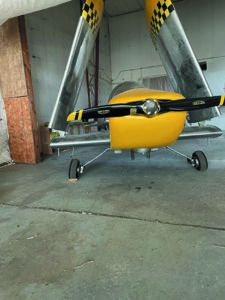
While it sounds elementary, the first thing to do when you are in a situation in which you need to have your aircraft moved is to sit down and outline precisely what you need and when you want it done. One of the most basic situations is that you’ve flown somewhere, you weren’t able to get home with your airplane—most commonly due to a maintenance issue or weather—you airlined home and now you simply can’t spare the time to go get your airplane.
According to ferry operators we spoke with, another common situation is that the owner has purchased an airplane residing elsewhere and can’t go get it or isn’t qualified to fly it yet. California-based operator Jim Hogan of Hogan Aviation (www.hoganaviation.com) told us that in helping pilots buy airplanes, he gets hired to ferry aircraft from the Midwest to California because California pilots are nervous about thunderstorms and from California to the Midwest because Midwest pilots are uncomfortable with mountain flying. That made sense to us—and seemed to be smart decision-making by pilots about to step into a new plane.
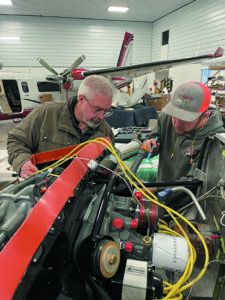
Do you need a checkout or recurrent training in the aircraft? There are ferry operators who offer that service. That can be especially important if you’re buying a tailwheel airplane. We spoke with Todd Givens, proprietor of Ace Basin Aviation (www.acebasinaviation.com) in Walterboro, South Carolina, who ferries only tailwheel aircraft. He told us that he works with new tailwheel aircraft owners to provide training for a tailwheel endorsement and training in the new airplane as we’ll as ferry services.
He pointed out that it’s unusual to do all the training during the ferry flight—it usually is completed at the destination. His operation has a selection of airplanes that he often uses for initial training and a tailwheel endorsement for a prospective owner and will consult with those pilots and help them select the right airplane, and ferry it, if needed.
Carl Garvey of Aviation Training Management (www.flyatm.com) in Franklin, Tennessee, mentioned that a new aircraft owner is often a high net worth individual who can’t take the time off to go along on a ferry flight and, if training is required, Garvey sets it up once the airplane is at the new owner’s airport.
All ferry services are not created equal. There are large operators that are able to ferry just about anything to just about anywhere in the world. However, our survey indicated that most are smaller operators that provide ferry services in addition to being an FBO and/or flight school. In addition, most target a niche—some only ferry turbine equipment, others target piston singles and twins.
QUOTE
Almost all of the websites we reviewed included a page through which a prospective customer could request a quote for ferry service.
When it’s time to request a quote, we recommend that you do so with three or four services that are reasonably close to the ferry route so as to help keep pilot travel costs down. Be ready to provide some specific details beyond the type of airplane, origin and destination for the flight and prospective dates. If not on the original request for a quote, you’ll still be expected to provide details about the airplane, notably the registration number, date of the last annual, when it was last flown, time on the engine, avionics installed and what equipment is not working.
All of the operators expressed a need to know as much about the condition of the aircraft as possible before agreeing to move it. They’re going to be putting their lives on the line and they’ve been unpleasantly surprised once or twice.
We recommend being completely honest in describing the aircraft condition. The last thing you want is for the ferry pilot to arrive, look the airplane over, realize that it’s in lousy shape and refuse to fly it, leaving you out the cost of getting the pilot there and home with the airplane unmoved.
INTERNATIONAL
If the flight is to be international, you’ll be providing detailed paperwork on the airplane and its ownership that the ferry service will use to get the necessary permits and clearances to fly the airplane through the countries on the route.
The international services are one-stop shops—they do everything from obtaining all needed permits and overflight approvals to installing ferry tanks in the airplane, if needed. International ferry flights aren’t cheap. We saw prices of over $20,000 to move a Cessna 182 or a King Air from the U.S. to the U.K. We note that obtaining avgas at stops in the North Atlantic tends to be eye-wateringly expensive.
WHAT DOES IT COST?
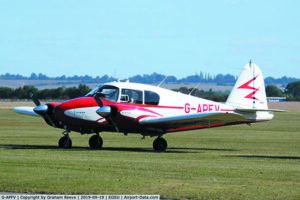
We’ve seen ferry services get underway to move an airplane as quickly as the day after initial contact. Not surprisingly, such a response capability costs money. More commonly you’ll provide a time frame in which you want the airplane moved and, to keep costs down, the ferry pilot will do some homework to find a weather window that will allow the delivery to take place without having to stop and wait out weather.
In talking with operators we observed that most offered two delivery cost options to the prospective customer, a fixed fee or a daily rate, with the customer paying expenses on top. We saw daily rates for ferry pilots for piston-engine airplanes ranging from a low of $550 per day to a high of $900 per day that the pilot is flying. All the ones we spoke with that offered daily rates charged about half the flying daily rate for days the pilot was traveling to or from the aircraft or sitting on the ground waiting out weather or maintenance.
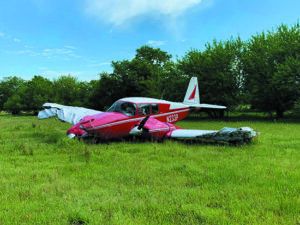
We have no recommendation with regard to whether a daily rate or fixed fee arrangement is more cost effective for the aircraft owner as the operator builds in some time for delays on a fixed fee deal.
Plan on spending some time speaking with the operator before closing the deal. You need to know exactly what the operator will and won’t do. We talked with operators that would do everything including a prebuy exam on an airplane the customer proposed to buy, assist with closing the sale, give dual to the new owner on the flight home and complete a full checkout in the airplane. We noted that few offered that much service, although quite a few allowed the owner to ride along on the ferry flight but didn’t want the potential liability of checking the new owner out in the airplane.
Virtually all of the operators we surveyed required that the owner sign a formal ferry flight agreement. All of the operators told us that they require the aircraft owner to add the ferry pilot to the owner’s aircraft insurance as an additional insured, with a waiver of subrogation.
EXPENSES
The aircraft owner is obligated to pay for all expenses associated with the ferry flight, transportation to and from the airplane for the ferry pilot, meals, landing fees, avgas and any maintenance that is needed.
Operators varied with regard to the amount of money the owner must pay up front. Most required a substantial deposit and some the entire estimated cost. One told us that he has been burned a few times by customers, so he makes a conservative estimate of the full cost, collects his money up front and then, almost invariably, is able to come in under the estimate and refund money to the customer at the end of the flight.
Another operator said that he only requires a deposit, but does not turn the keys over at the end of the flight until the invoice is paid in full. He quoted the adage that possession in nine-tenths of the law.
DELAYS
Things sometimes go wrong during a delivery. Carl Garvey told us of being stuck in Greenland for some time, waiting for weather during a winter delivery of a Cessna 182 from the U.S. to the U.K.
If the ferry pilot is correct in weather window selection, the most common delay is when something breaks. All of the operators we spoke with said that their pilots will immediately advise the owner and work with the owner and the shop to expedite repairs. From time to time the repairs required are so extensive that they will take days or weeks. If that is the case, the financially prudent action is to have the ferry pilot head home and return for the airplane when it’s again ready to go.
The risk of the need for repairs during a delivery means that most operators prefer to only stop for fuel at airports with services on the field. That means the cost of fuel will be more expensive than if fuel stops are selected on the basis of price. Jim Hogan told us that cheap fuel usually means an absence of services, something not at all good when the electrical system decides to take the day off after refueling in Resume Speed, Montana.
Owners often require that the airplane be hangared on overnight stops, particularly east of the Rockies where storms can mean hail.
The operators we spoke with told us that their ferry flights in piston singles and light twins are only done in day, VFR conditions. However, they also told us that they will take advantage of long summer daylight and fly in excess of 12 hours—there is no crew duty time limit for Part 91 ferry flights.
BE PATIENT
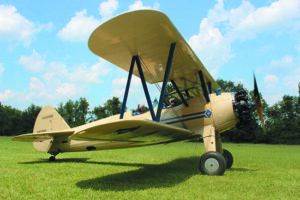
Once a ferry agreement has been made, our recommendation to the owner is to be patient. Let the pilot do their job and do it right. Don’t be like the owners Jim Hogan told us about—laid back about the schedule until the contract is signed and then they want the airplane tomorrow.
Ferry pilots told us that once they get to the airplane, their procedure is to look over the aircraft paperwork—if they haven’t already seen it—and then do a very involved preflight. They don’t want any surprises. Every one we spoke to told us that every once in a while the preflight turns up a no-go item. Most of the time it’s something that can be fixed in a few hours or by the next day. Often it’s because the airplane has been sitting. Occasionally the airplane has been badly misrepresented by the owner or the owner refuses to fix airworthiness squawks and the ferry pilot turns around and goes home. They refund the deposit less the expenses of the trip to the airplane and home.

Todd Givens said that he has been successful in avoiding that situation by spending time talking with the owner early in the process of setting up a ferry job. Others told us that unrealistic expectations on the part of a prospective customer or a refusal to provide solid information on the condition of the airplane caused them to decline to take the job.
It’s not uncommon for an operator to move an airplane that is out of annual and has to fly on a ferry permit. With that knowledge up front, the operator can work with the owner, maintenance techs and the FAA to ensure that the airplane is in a condition to be ferried safely, get a ferry permit and move the machine.
No matter what, as PIC, the ferry pilot has the last word regarding whether the airplane is in a condition to be flown safely.
PROGRESS
You should receive regular reports of progress from the pilot. In addition to regular phone calls or texts, operators we spoke with had SPOT or Garmin trackers that provided real-time information for the client.
You should also expect the pilot to treat the airplane with the utmost respect—the airplane should arrive in a condition at least as nice as when it departed.
The route is at the discretion of the pilot, although it should be as direct as weather and terrain allow.
Weather is weather—it delays delivery flights. That’s where patience on the part of the owner comes in. We like that the operators we spoke with cut the daily rate for the pilot when the pilot can’t fly due to weather—that means less pressure from the owner on the pilot to go.
CONCLUSION
We’ve had good experiences working with ferry services—and with owners when we’ve ferried airplanes. Open communication between ferry pilot and owner is a must. We also firmly believe that if you can’t go get your airplane yourself, trust it to a professional ferry service to ensure a happy reunion.

